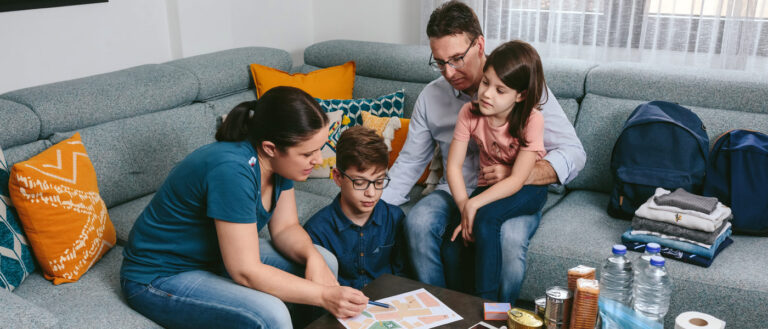September is National Preparedness Month, a time to consider how to stay safe in the face of potential disasters. To help members of the Case Western Reserve University community be prepared, The Daily teamed up with the Office of Resiliency to share safety tips throughout the month.
We’ve shared information on the types of disasters you should prepare for, how to assemble an emergency supply kit and no- and low-cost ways to stay prepared.
This week, we’ll cover ways to make sure all members of your family are prepared—no matter their age. Here are some tips to help youth with preparedness.
Safety Preparedness with Kids
Emergencies and disasters can be scary. To help manage this stress, the Office of Resiliency recommends incorporating games and educational programs that can help you teach kids how to stay safe before, during and after a disaster.
Games
- Disaster Master Game: Challenge kids to help the heroes in your game make survival decisions. If answered correctly, you can unlock new levels. If answered incorrectly, the game could end.
- Build a Kit Game: Ask kids to help build an emergency kit and checklist as you travel together to different locations.
Educational programs
- Prepare with Pedro: Children can learn how to stay safe during an emergency by using these free governmental crosswords, coloring and matching games.
- Pillowcase Project: This resource teaches students ages 3-5 skills that can help them prepare for an emergency. Upon completion, students receive a pillowcase to use to build a disaster supply kit.
Involving Teens
Everyone has a role within their community to ensure its safety. Teens can help their families, schools and communities by learning how to prepare for disasters. Check out a few of the organizations the Office of Resiliency suggests teens get involved with.
- The council was created in 2012 to bring youth leaders together to help their communities prepare for disasters.
- Teens can get involved by taking the following steps:
- Create a login.
- Complete an application form.
- Stay connected on Ready Kids.
- Application requirements:
- Complete application form
- Letters of recommendation
- Academic records
- List of extracurricular activities
- Any supplemental materials that showcase capabilities
- The Community Emergency Response Team (CERT) is a national volunteer team that is trained in disaster preparedness and emergency response.
- Why join?
- Bystanders are usually the “first responders” on scene. This training helps teens learn how to respond, so that they can offer immediate assistance.
- As participants, teens will help organize volunteers, assist in evacuations, give assistance to survivors, provide damage assessment information, provide shelter support and assist with crowd control.
- They’ll learn how to put out small fires, conduct light search and rescue, assist the injured, set up medical areas, assist emergency responders, etc.The training takes approximately 20 hours to complete. Teen CERT: Launching and Maintaining a Training
- Campus CERT Starter Guide
To keep up to date with preparedness recommendations or connect with other resources as National Preparedness Month continues, check out ready.gov.

